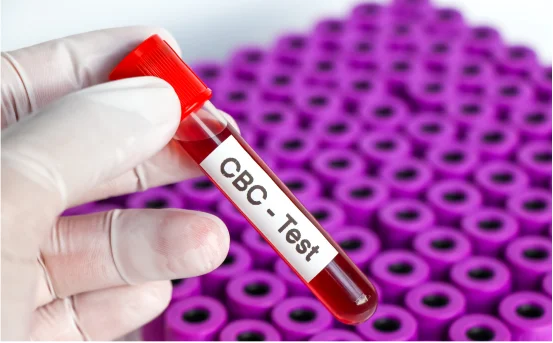Microvascular surgery is a highly specialized and intricate form of surgery that involves the use of a high-powered surgical microscope to repair and reconnect tiny blood vessels and nerves—usually less than 3 millimeters in diameter. These procedures have transformed the landscape of modern medicine, especially in the fields of reconstructive surgery, cancer care, trauma, and peripheral nerve surgery.
The primary goal of microvascular surgery is to restore blood flow and promote healing by meticulously reconnecting arteries and veins that supply oxygen and nutrients to tissues. Such surgeries are vital in saving limbs, reconstructing facial features, restoring nerve function, and improving the overall quality of life for patients. The major types of microvascular surgeries that are commonly performed today, along with their key purposes and benefits.
Types Of Microvascular Surgery
- Free Flap Surgery
Restoring Complex Structures Using Tissue Transfer
Free flap surgery, also known as free tissue transfer, is one of the most well-known and frequently performed microvascular procedures. In this technique, a segment of tissue comprising skin, fat, muscle, or bone is completely detached from its original location (the donor site) and transplanted to a different part of the body that requires reconstruction (the recipient site).
The surgeon then reconnects the small arteries and veins of the transferred tissue to the blood vessels at the recipient site using microscopic sutures. This restores blood flow to the tissue and ensures its survival. Free flap surgeries are commonly used in:
- Head and neck reconstruction after cancer surgeries
- Breast reconstruction following mastectomy
- Lower limb salvage after traumatic injuries
- Facial reconstruction due to congenital defects or accidents
This type of surgery is complex and requires a highly skilled surgical team but offers excellent cosmetic and functional outcomes for patients.
- Head and neck reconstruction after cancer surgeries
- Replantation Surgery
Reattaching Severed Body Parts with Precision
Replantation surgery refers to the surgical reattachment of a body part such as a finger, hand, arm, toe, or ear that has been completely amputated. Time is critical in these cases, and the success of the procedure largely depends on how quickly and carefully the blood vessels, nerves, tendons, and bones are reconnected.
Microvascular techniques are essential to restore blood circulation in the severed body part, which is key to its survival. Surgeons use a microscope to reconnect tiny arteries and veins, often just 1–2 millimeters in diameter.
Replantation surgeries are most effective when performed within hours of the injury and can restore significant function, especially in the hands or upper limbs. Rehabilitation and physical therapy are often necessary post-surgery for optimal recovery.
- Lymphaticovenular Anastomosis (LVA)
A Microsurgical Approach to Treat Lymphedema
LVA is a relatively newer microsurgical procedure designed to alleviate lymphedema, a condition characterized by the accumulation of lymphatic fluid, usually in the arms or legs. This often occurs after lymph node removal during cancer treatment.
In this surgery, lymphatic vessels are connected to small nearby veins (venules), enabling lymph fluid to bypass the obstructed lymphatic pathways and drain directly into the venous system. LVA is typically performed under local anesthesia and is minimally invasive.
Key benefits of LVA include:
- Reduction in limb swelling
- Decreased discomfort and heaviness
- Improved skin condition and mobility
- Reduced need for compression garments
This procedure is best suited for early-stage lymphedema and can significantly enhance a patient’s quality of life.
- Reduction in limb swelling
- Vascularized Lymph Node Transfer (VLNT)
Transplanting Healthy Nodes to Fight Lymphedema
VLNT is another surgical treatment for more advanced lymphedema cases. Unlike LVA, which creates a bypass route for lymphatic flow, VLNT involves transferring healthy lymph nodes from a donor site (such as the groin or neck) to the affected limb.
Surgeons use microvascular techniques to reattach the blood vessels supplying the lymph nodes to those in the target area. Once blood flow is restored, the transplanted nodes help absorb and transport excess lymph fluid, gradually improving drainage and reducing swelling.
VLNT offers long-term results and is often combined with LVA or other therapies for comprehensive lymphedema management.
- Nerve Grafting and Nerve Transfer
Repairing and Restoring Damaged Nerves
When nerves are severely damaged due to injury, surgery, or disease, microvascular nerve grafting and transfers are essential for restoring function. In nerve grafting, a section of the healthy nerve is taken from another part of the body (often the leg) and used to bridge the gap between the damaged nerve ends.
In nerve transfer surgery, a less important but functioning nerve is redirected to the site of nerve damage to restore movement or sensation. For example, this technique is frequently used in brachial plexus injuries, facial paralysis, or peripheral nerve damage in the limbs.
Microsurgical techniques ensure precise alignment of the tiny nerve fibers, improving the chances of successful regeneration and functional recovery.
- Microvascular Bone Grafting
Reconstructing Bone with Blood Supply for Better Healing
In cases of large bone loss due to trauma, infection, or tumor resection, simple bone grafts may not suffice. Microvascular bone grafting involves transplanting a segment of bone along with its blood vessels from a donor site, such as the fibula or iliac crest.
The vessels are then reconnected at the recipient site to maintain blood supply to the transplanted bone. This enhances healing, reduces complications, and provides a more reliable reconstruction especially in the jaw, face, or limbs.
This technique is frequently used in maxillofacial reconstruction and orthopedic trauma surgery.
- Scalp and Facial Reconstructive Microsurgery
Restoring Appearance and Confidence
Microvascular techniques are often employed in facial reconstruction following trauma, burns, cancer, or congenital deformities. Surgeons use skin and soft tissue flaps to recreate facial structures such as the nose, lips, eyelids, or ears.
Reconstruction of the scalp is also possible using free flaps, especially after tumor removal or severe burns. Microvascular surgery allows the transferred tissue to integrate with the patient’s blood supply, ensuring natural-looking results and durable healing.
Conclusion
Microvascular surgery is a cornerstone of modern reconstructive and restorative medicine. Whether it’s reattaching a severed finger, rebuilding a cancer-affected face, restoring nerve function, or relieving chronic lymphedema, these advanced techniques offer patients new hope and improved quality of life.
With ongoing advancements in surgical instruments, imaging, and postoperative care, microvascular surgeries continue to evolve making once-impossible recoveries now achievable. Patients considering such procedures should consult experienced microsurgeons to explore the best treatment options tailored to their needs.























